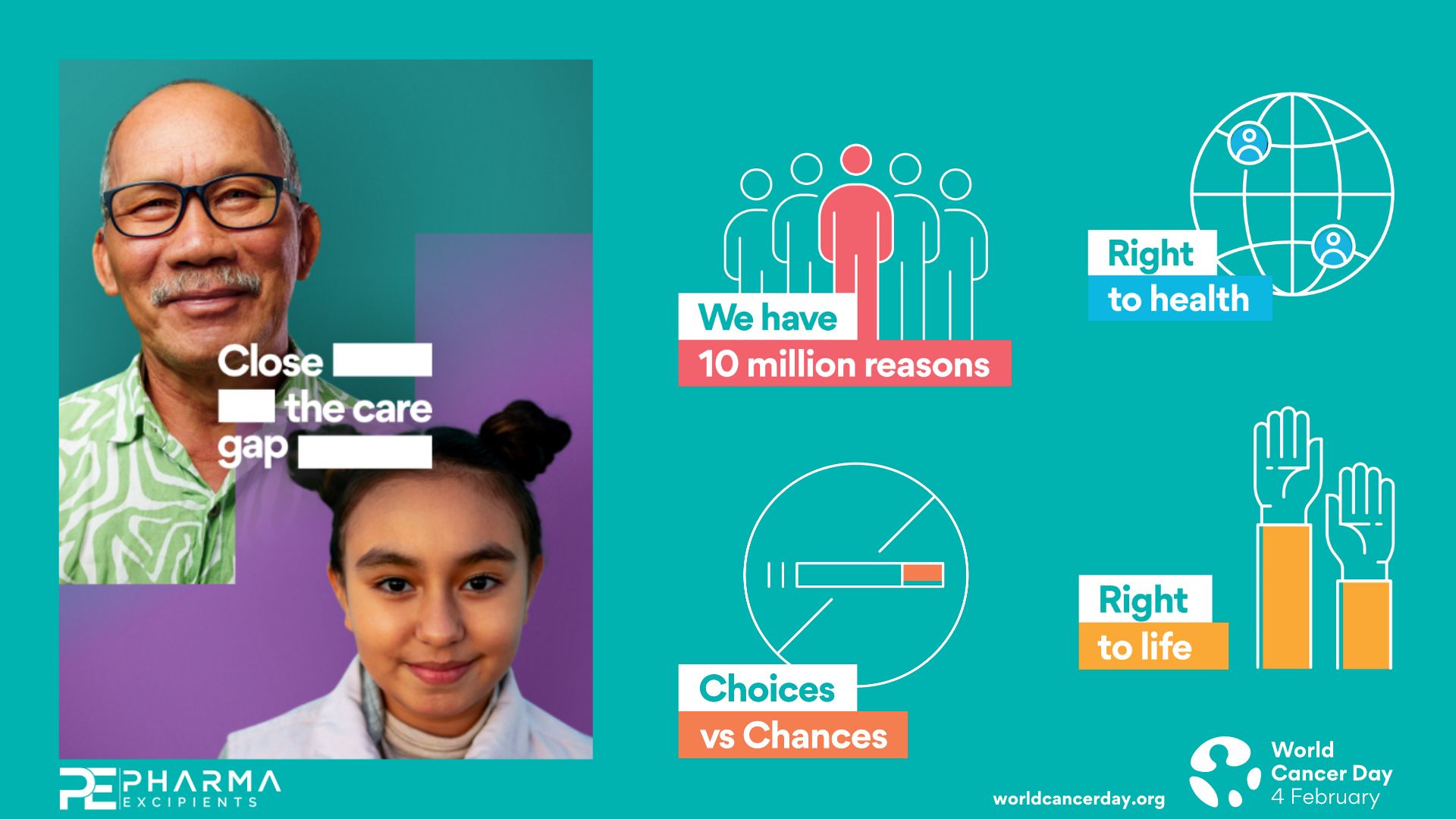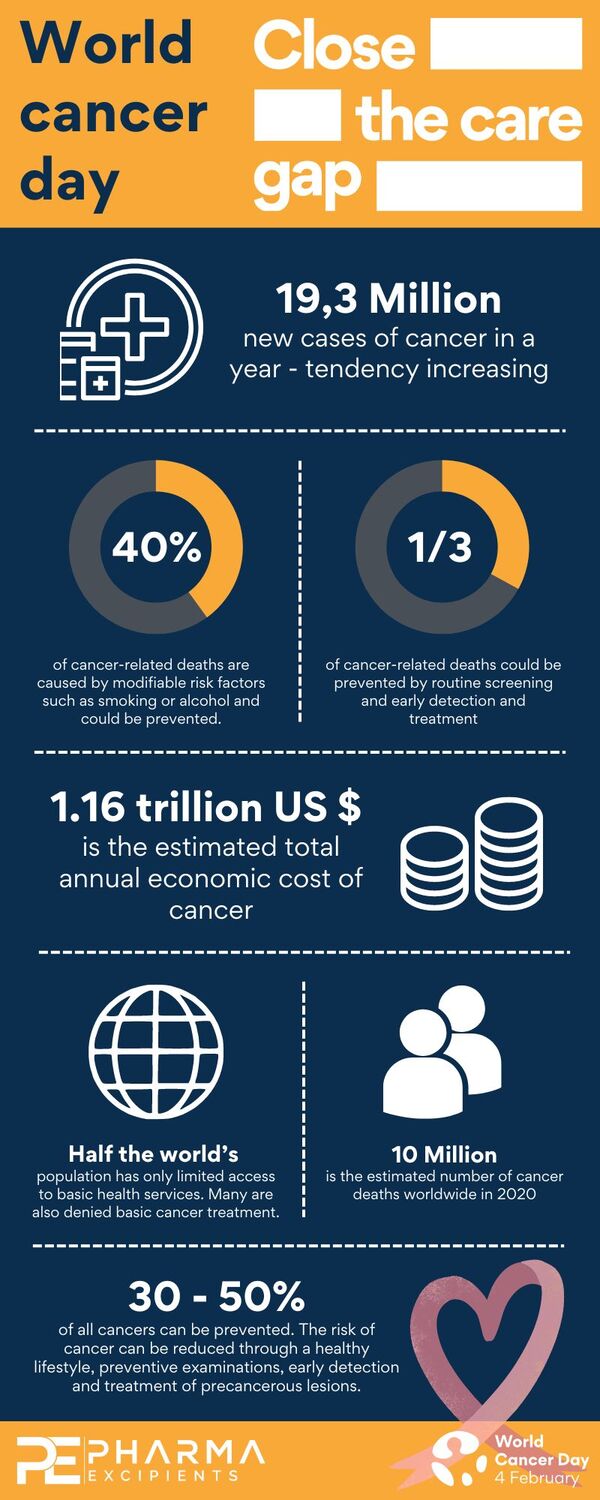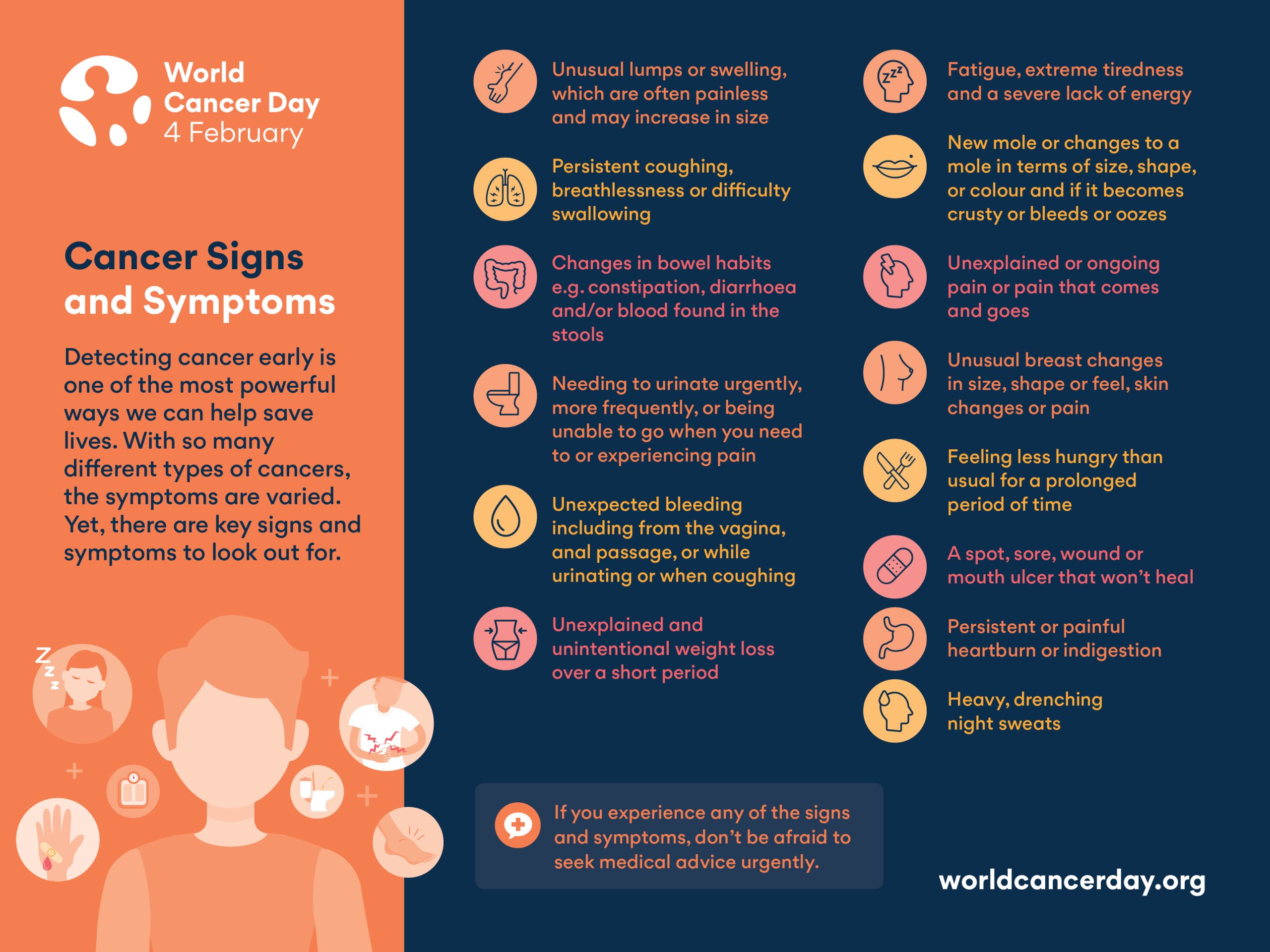World Cancer Day 2024

Create a future without cancer. The time to act is now.
World Cancer Day takes place every year on 4 February and will be held for the 24rd time in 2024 under the theme “Close the Care Gap”. The day was initiated as a global initiative led by the Union for International Cancer Control (UICC) to raise global awareness, improve education and promote personal, collective and government action. Together, millions of preventable cancer deaths can be saved and access to life-saving treatment, care and prevention can be made available to all people around the world.
World cancer day
4th February 2024
Since 2000, hundreds of events and activities have been taking place around the world as part of World Cancer Day. Not only organizations, but also schools, communities, companies and hospitals are getting involved, online and in the streets. As a result, this day has become a global, positive movement to face this major challenge together.
This year’s theme is all about equity in access to cancer care
World Cancer Day 2022-2024 theme: Close the Care Gap
Even today, a large part of the world’s population still faces barriers to cancer care and prevention. These gaps need to be closed collectively, which is the goal of this year’s World Cancer Day campaign “Close the Care Gap”. Each individual can contribute to raise global awareness of the existing gaps in cancer care and to create a world without cancer through new impulses and innovations.
Facts about cancer
What is cancer?
Cancer is a disease that arises when cellular changes in a group of normal cells causes a uncontrolled, abnormal growth and division of cells. All cancers except blood cancer (leukemia) form a visible growth that is called a tumour. If left untreated, cancer cells can occur in a particular area and then spread through the blood and lymph nodes to surrounding normal tissues and other parts of the body. The cancer cells are consuming oxygen and nutrients that would normally feed other cells and affect the digestive, nervous, and circulatory systems or release hormones that affect body functions.
Which groups of cancer tumours can be distinguished?
We divide cancer tumours in two groups:
Benign tumours grow quite slowly and don’t spread to other parts of the body. The cells are similar to normal cells and rarely threaten life. However, problems may arise if they grow very large or become painful or affect the body (e.g. press on other body organs, take space inside the skull, release hormones).
Malignant tumours arise from cancer cells that grow faster and spread into surrounding tissues. They can also lead to metastasis, which occurs if cells break off from the primary tumour and spread to other parts of the body in the bloodstream or through the lymph system to form secondary tumours.
What types of cancer are currently known?
We can classify cancers according to where they originate in the body, e.g. breast cancer or lung cancer. Here we can currently distinguish between more than 200 types of cancer. We can also classify cancer according to the type of cell in which it originates. Actually, there are 5 main groups:
Carcinoma: Arises from the epithelial cells in the skin or tissues that encloses internal organs and may invade the surrounding tissues or organs and metastasise to the lymph nodes and other body areas. Breast, prostate, lung, and colon cancer are the most common types of carcinoma.
Sarcoma: Starts in the surrounding and supporting tissue e.g. bones, cartilage, fat, muscle or blood vessels. Leiomyosarcoma, liposarcoma, and osteosarcoma are the most common types of sarcoma.
Lymphoma and Myeloma: Arises in the cells of the immune system. While lymphoma is a cancer of the lymphatic system that can appear anywhere in the body, myeloma starts in the plasma cells which normally produces antibodies.
Leukaemia: Is the cancer of white blood cells and begins in the tissue that form blood cells. Lymphocytic leukemia and chronic lymphocytic leukemia are the most common subtypes of leukemia.
Brain and spinal cord cancers: Starts in the cells of the brain or spinal cord and are called cancers of the central nervous system. Glioma is the most common type of brain tumor and develops from glial cells.
What risk factors can affect cancer?
Various risk factors contribute to the cause of cancer. Some of these factors cannot be influenced, while we can actively control others, such as our diet.
Non-modifiable risk factors include a higher age, cancer-causing substances (carcinogens), a genetically inherited high risk for a specific cancer and weakened immune systems.
Modifiable risk factors include consumption of alcohol or tobacco, bad nutrition, low physical activity, overweight, ionising radiation, work place hazards and infectious agents.

Cancer Signs and Symptoms

Infographic: World Cancer Day Campaign Material by Union for International Cancer Control (UICC) is licensed under a Creative Commons Attribution-ShareALike 4.0 International License.

